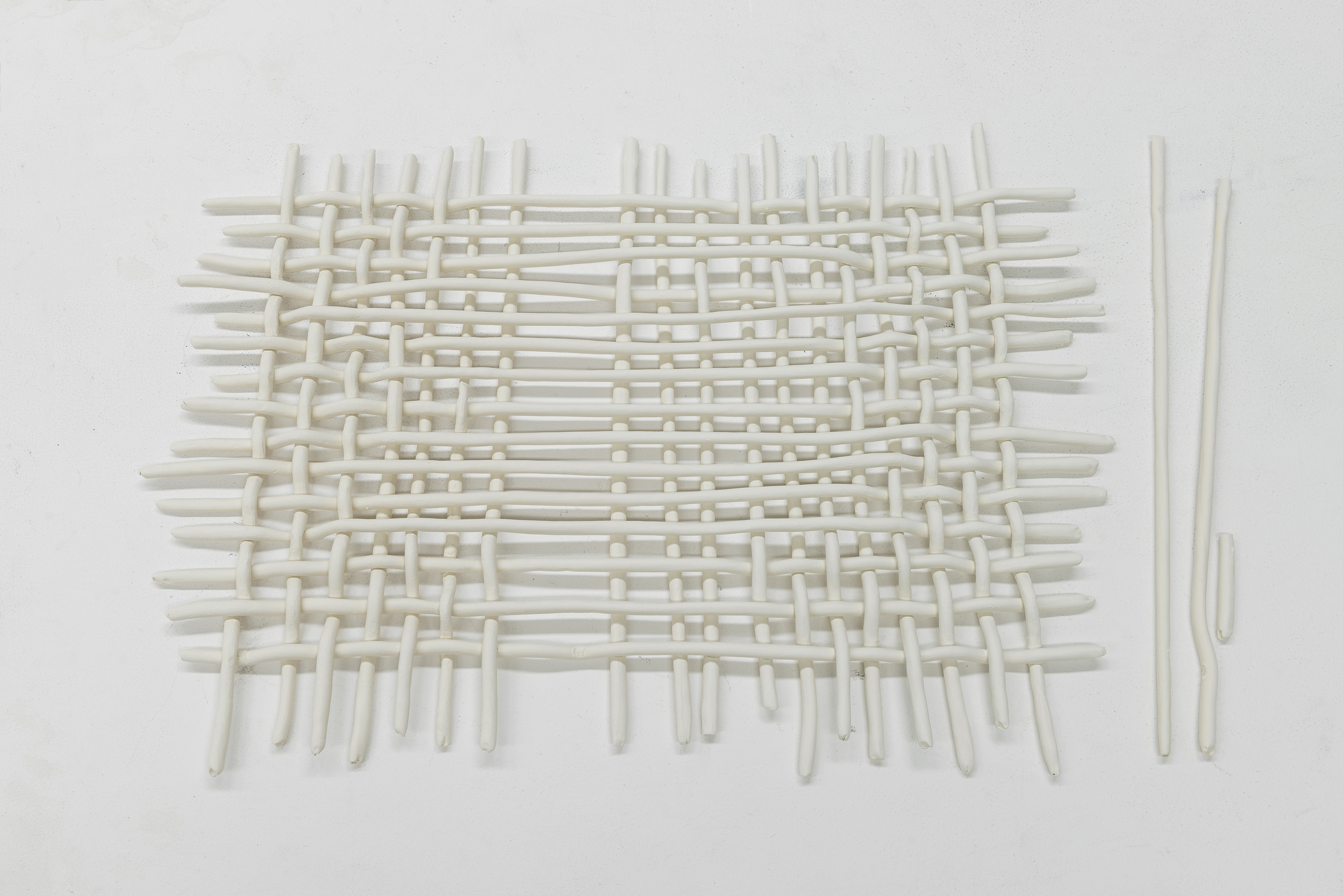
Plied Bodies
2019
Glazed and unglazed earthenware and stoneware, wool, cotton, ceramic slip the artist's hair, MDF, paint, video projection, iPad with video
2019
Glazed and unglazed earthenware and stoneware, wool, cotton, ceramic slip the artist's hair, MDF, paint, video projection, iPad with video


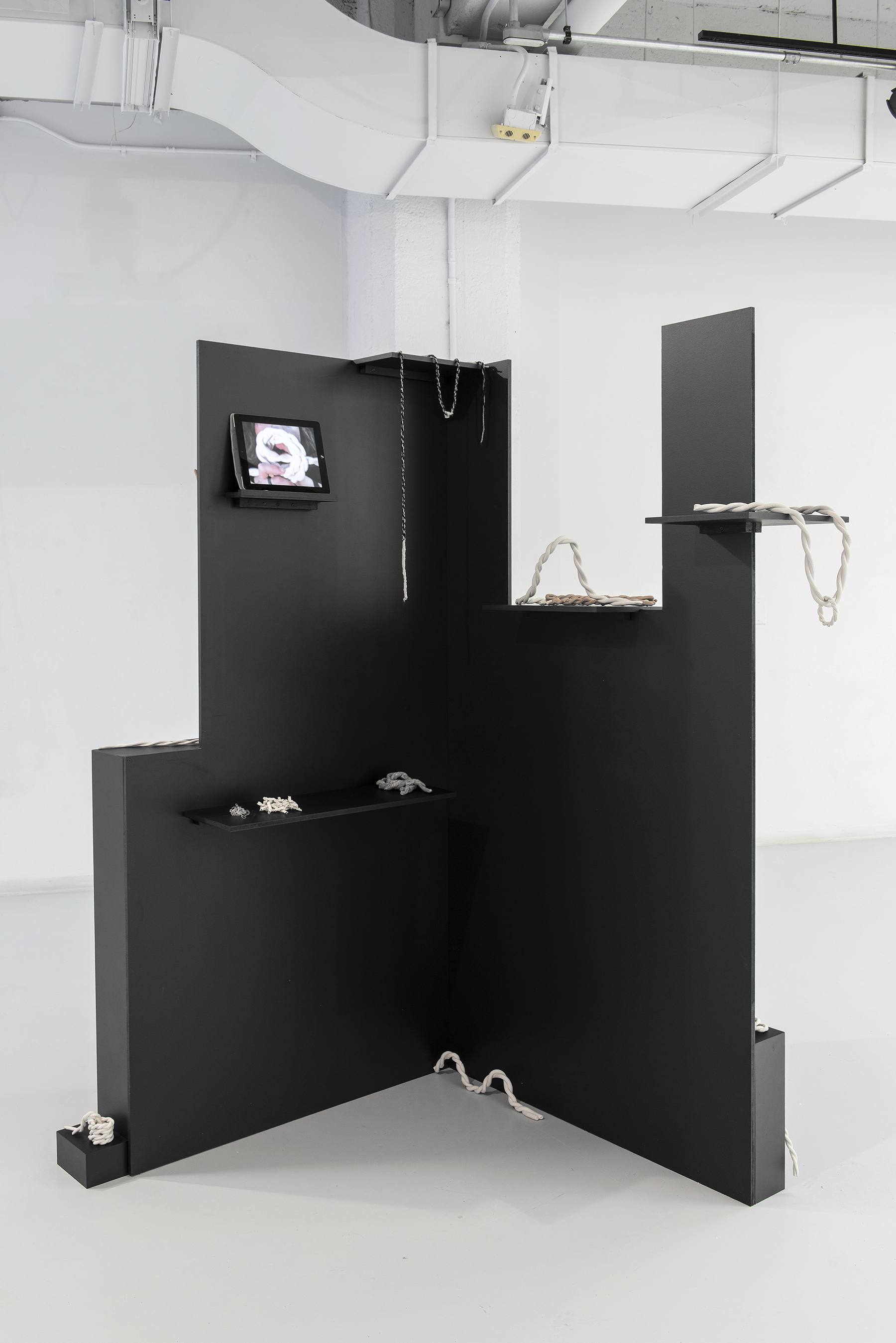



Body Work
2020
Various mixes of earthenware, stoneware, fireclay, ball clay, porcelain, Alberta slip, minspar, silica, grog (fine and coarse), baking soda, sand, soda ash, quinoa, rice, zinc, bone ash, wood ash, perlite, vermiculite, talc, ilmenite
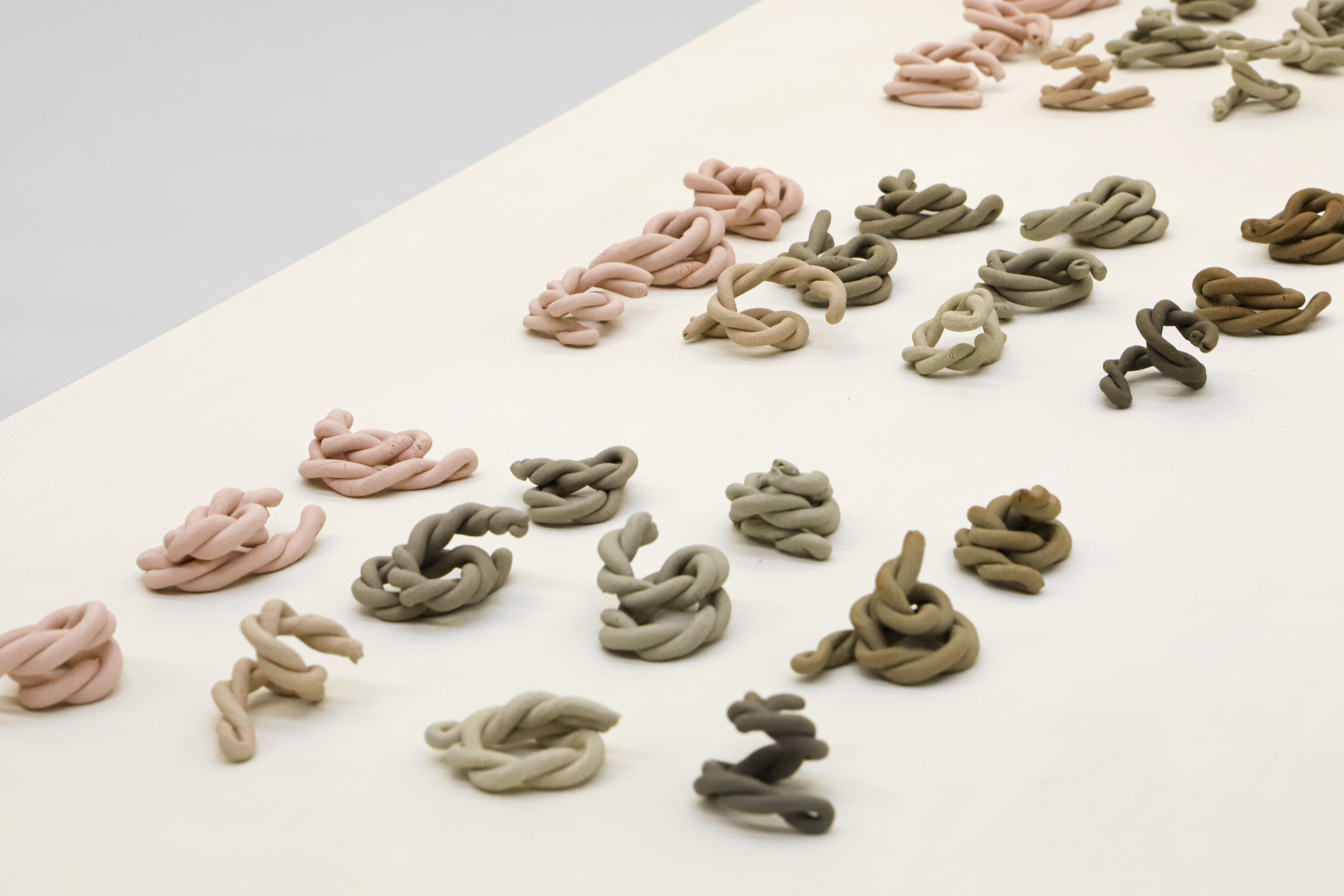
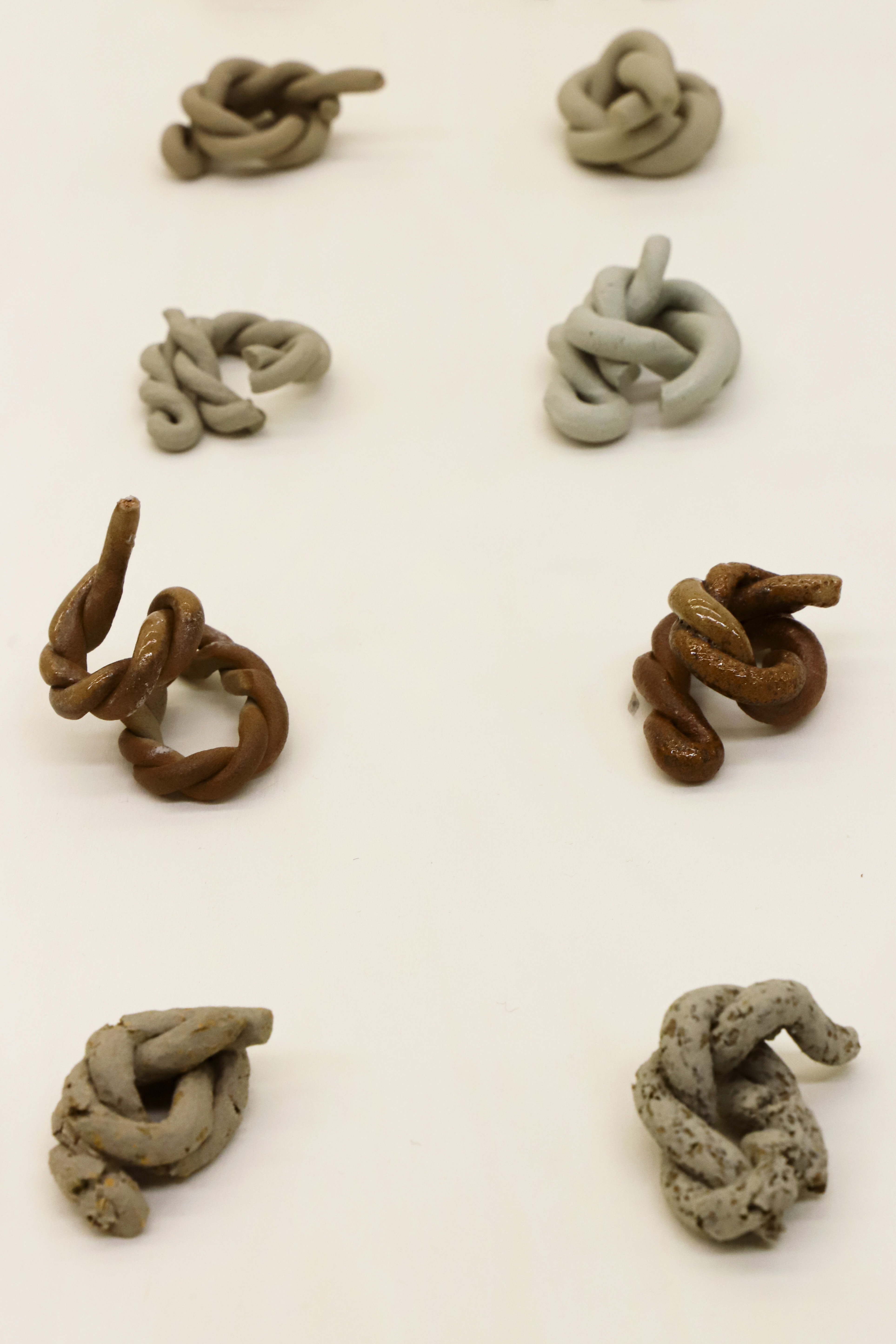
A clay body is a clay that is altered for different qualities and uses, a combination of clay, flux, and filler. Clay: the mud, the plastic ingredient, alumina + silica. Flux: the minerals, sodium, potassium, lithium, the melter, the change agent. Filler: organic or inorganic materials that alter texture and strength. In working with clay bodies, I am curious in the various properties of clay - color, vitrification, elasticity, workability, texture, solubility, and shrinkage - and the unexpected results that occur when materials are pushed to their capacities.
These clay body tests take the shape of small coils of plied thread, one of the elemental fiber structures. As coiled and plied clay dries and shrinks, the end of a coil rises like a dried noodle or a snake lifting its head to smell the air; soda added into a clay body forms crystals on the clay’s surface and it emerges glassy and ochre from the kiln; a clay mixed with rice grows fuzzy mold as it sits on the shelf waiting to be formed and then crumbles when it is fired, pockmarked where the rice burned away in the heat.
Sampling is a play practice. Through sampling, a maker plays with materials by testing their limits, responding to and asking questions of them, drawing out their possibilities. The sample’s set scale and material parameters allow for experimentation and flow, as do the rules in a game. Through acts of play, by questioning limits of known structures, and through methods of translation and transformation these samples become abstract models for the practice of destabilizing and reconfiguring broader social and political apparatuses. When gathered together in a space, these forms reference the precarity of bodies, climates, and social and political systems while proposing the re-constitution of those systems.
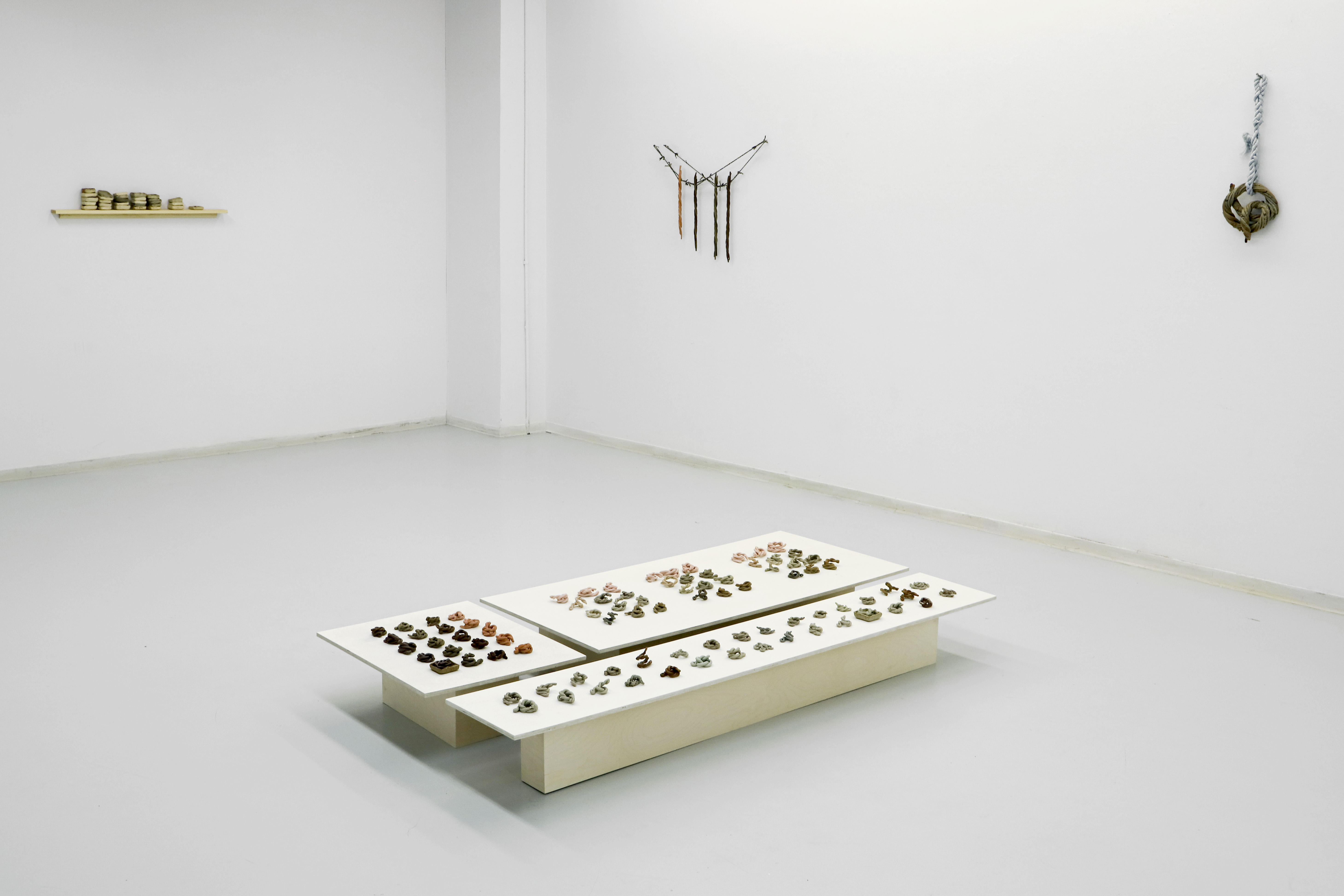

Two or three or four or red white black blue yellow
2019-2021
Tencel woven on jacquard loom, stoneware, steel support




Grappling
2019-2021
Clay and fibre rope samplers
2019-2021
Clay and fibre rope samplers
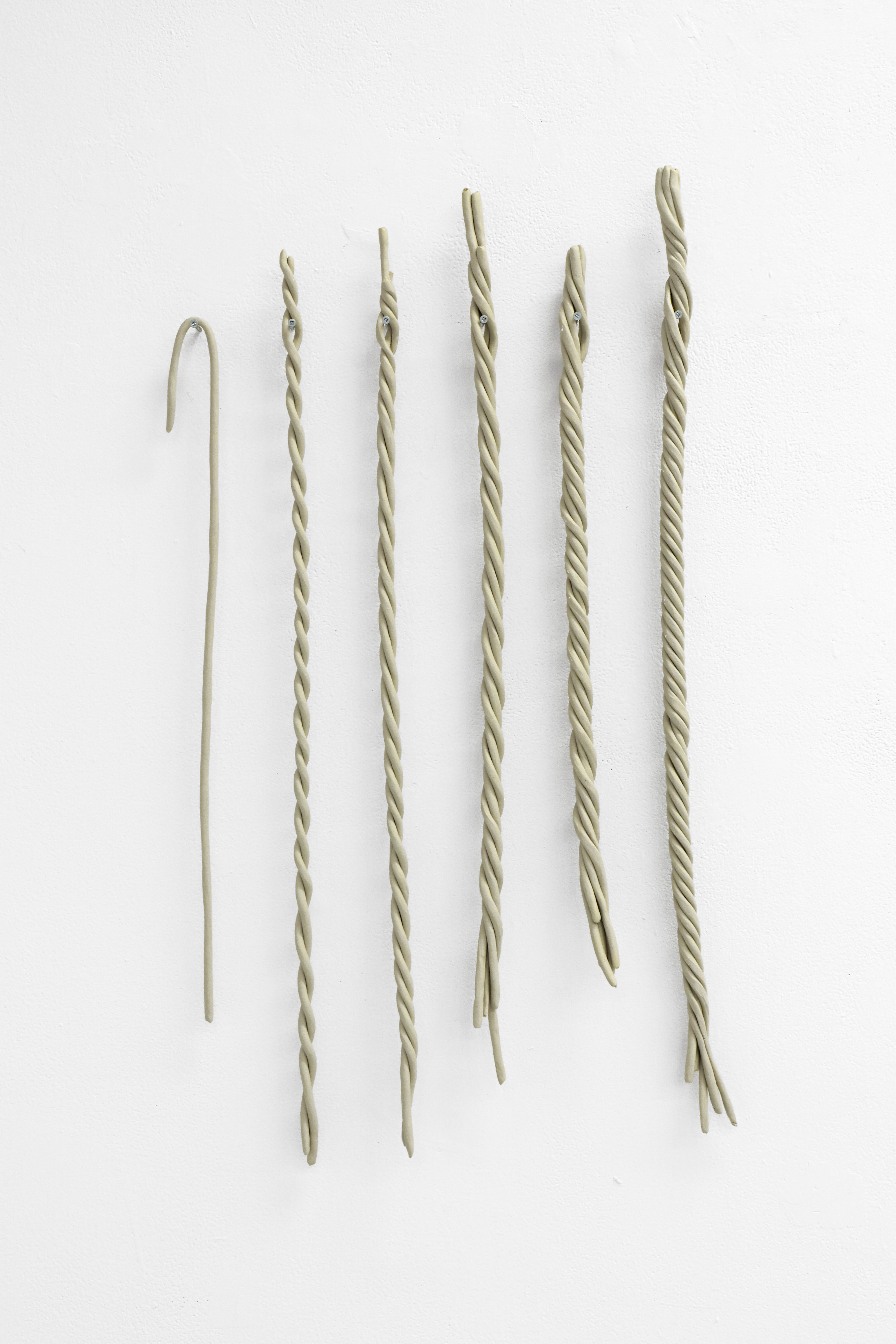
Six Ply
2019
Earthenware clay
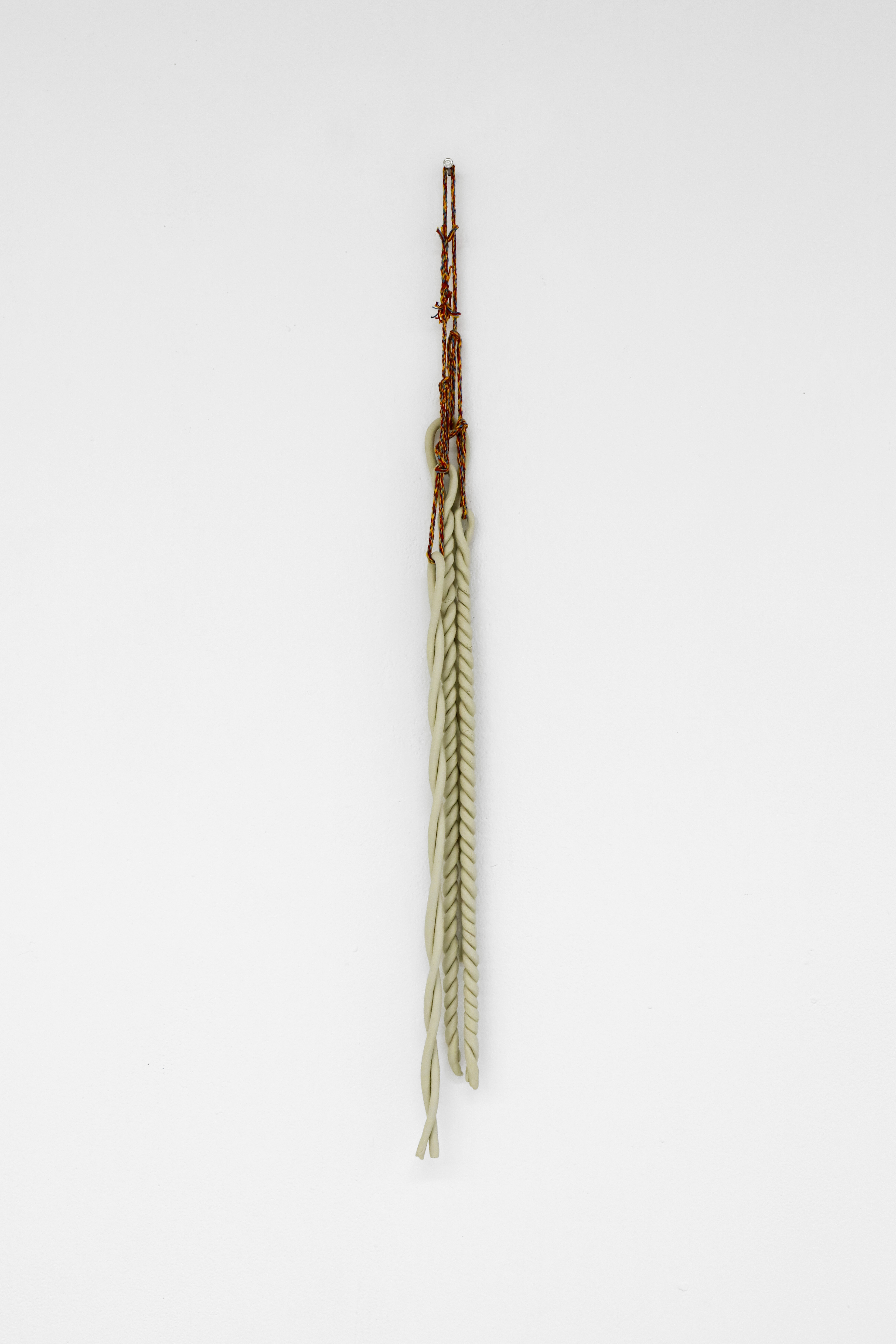
Z/S twist chimes
2021
Earthenware clay with cotton fiber rope


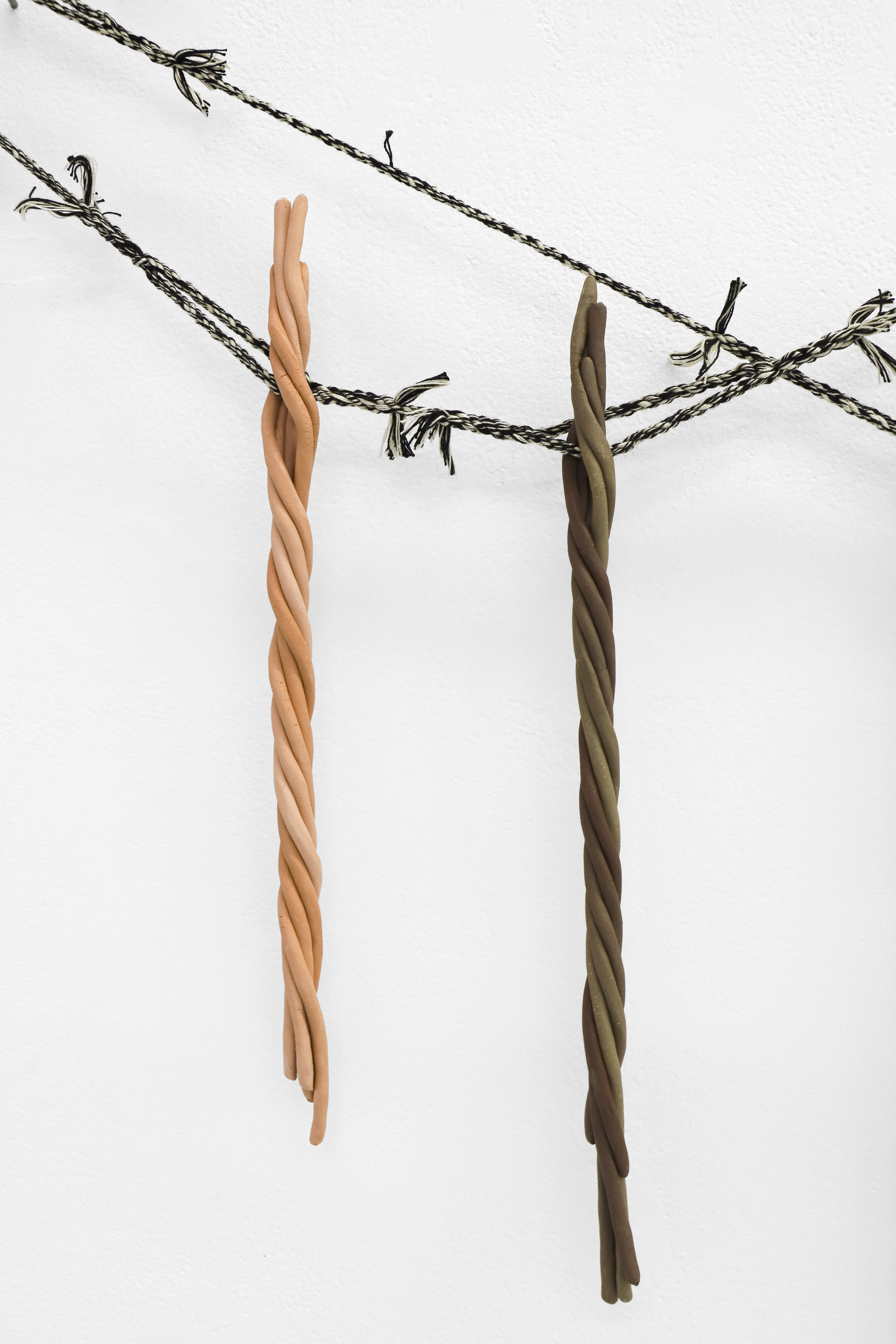 Terra
Terra2021
Earthenware, ball clay, fireclay, minspar, silica, and Alberta slip with cotton fiber rope
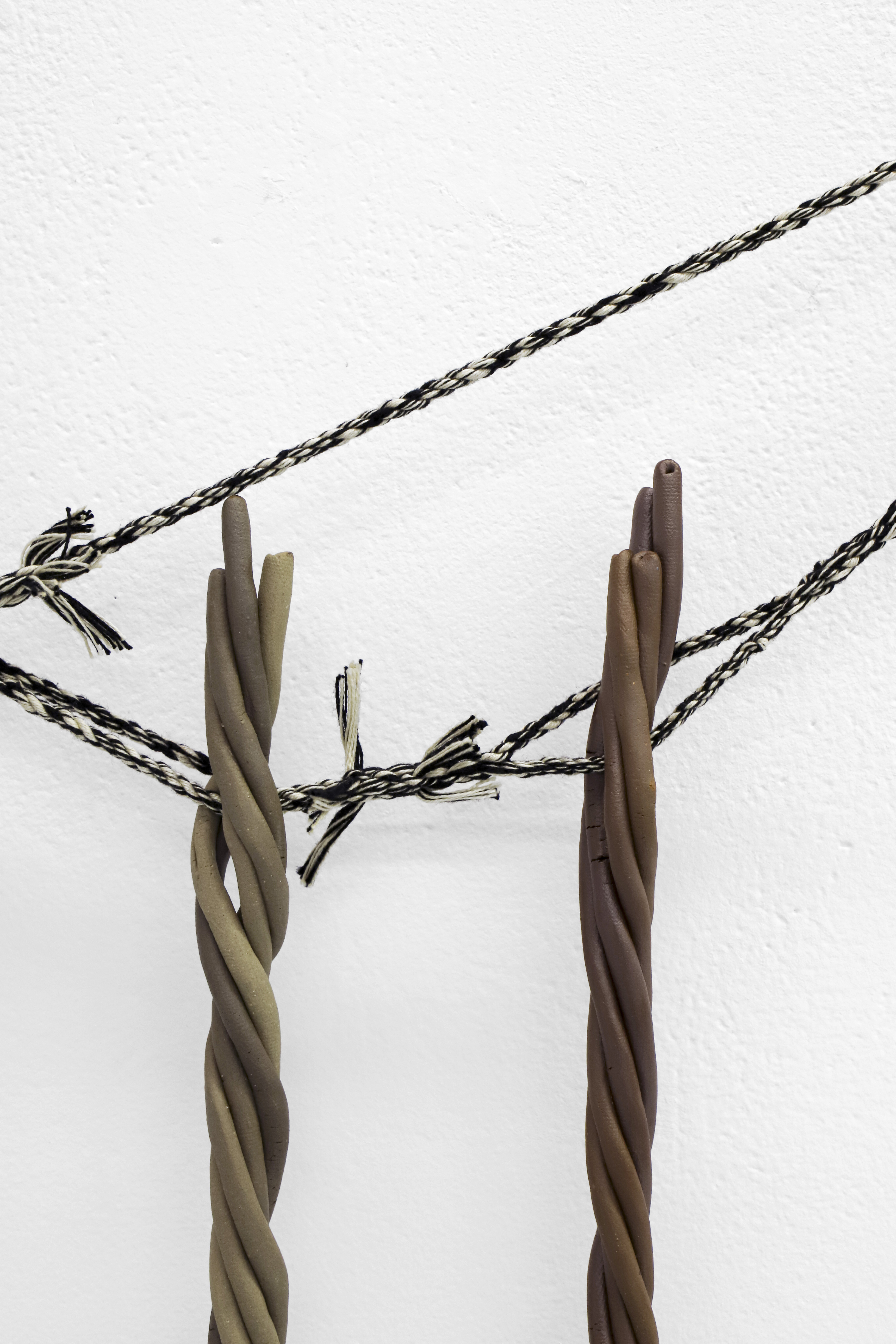
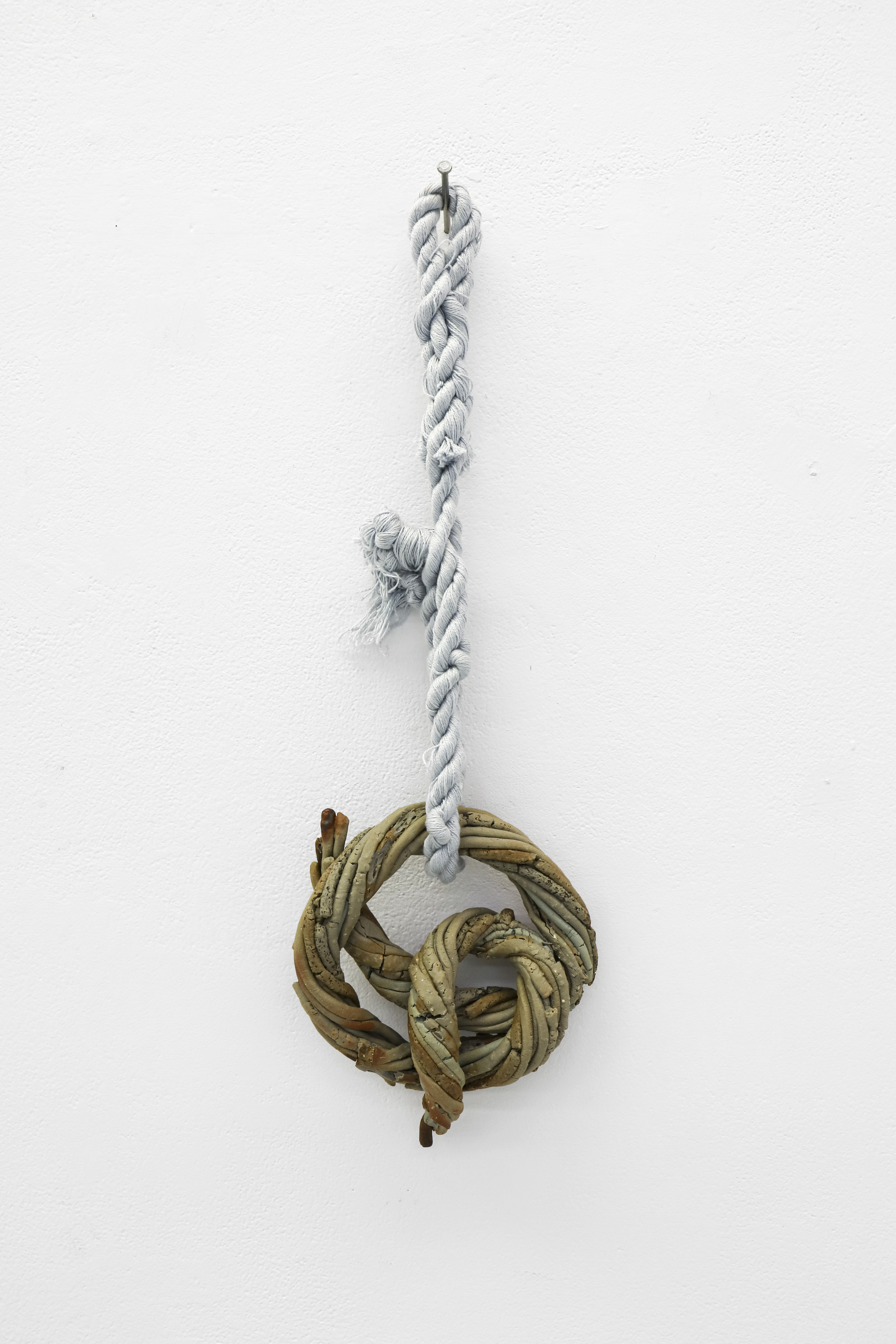

Altogether
2021
Earthenware, stoneware, fireclay, ball clay, porcelain, Alberta slip, minspar, silica, grog (fine and coarse), baking soda, sand, soda ash, quinoa, rice, zinc, bone ash, wood ash, perlite, vermiculite, talc, ilmenite with cotton fiber rope

Where are we going?
2020
Earthenware and stoneware with cottolin rope
These
works are pathways. Relations. Hard and soft, pliable and fixed; soft and
fixed, hard and pliable. Mergings. Translations. Resonances. Questions. What does the clay do? What does the fiber do? What can they
do? What do they do together? Support, hold, hang, stretch, twist, break,
unravel, dangle, count, wrap, twine, crack.
In clay, gestures typically used to create strong, pliable, functional materials, become frozen fragile forms. The resulting ropes are playful experiments and communicative gestural bodies, vulnerable to breakage and failure but often taking on unanticipated properties and shapes as the coiled and twisted clay dries and shrinks. My work in these materials grapples with their relationship to use as a way to explore what more they might offer when form is translated between media and their expected performance undermined. The ceramic rope takes a pliable fiber structure and fixes it in clay. Translated into a new material, the function of the form is eliminated: they are the wrong tools for the job. The ceramic thread cannot tie, stitch, or twine. This translation and inversion of the expected use of these materials expands our understanding of them and creates a space of revelation and possibility.
Tethers, chimes. Ropes to grasp onto, to climb. Are we going up or down or … ?
Where are we going?








